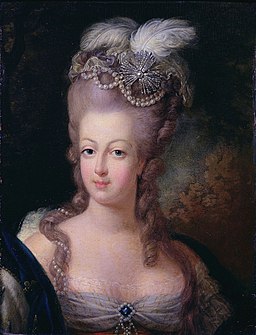
If I told you there is a story about two woman in the early twentieth century who seemingly were transported to just before the French Revolution, would you believe it to be true?
In 1901, two British women Charlotte Moberly and Eleanor Jourdain, decided on taking a tour of the Petit Trianon. During the course of their walk, they became lost and began to experience incidents they wouldn’t be able to explain. Not being able satisfactorily answer what they experienced, they spent years piecing together evidence, then wrote a book under the pseudonyms Elizabeth Morison and Frances Lamont.
What is interesting about their story is that they took great pains to figure out what they went through, and both these women were respected. Charlotte Anne Moberly was the first principal of St. Hugh’s Hall. “Annie’s credentials earned the confidence of parents who would not normally consider further education for their daughters. Under her leadership the numbers of female students at St Hugh’s Hall increased, and it was renamed St Hugh’s College. The college has a radical tradition: during its early years it had an active role in the women’s suffrage movement in Oxford and was part of the Oxford Women’s Suffrage Society. “1
Miss Jourdain “left Corran in 1903 to become vice-principal and, from 1905, tutor in French at St Hugh’s, at a sacrifice of income and status that was rewarded when she succeeded Miss Moberly as principal in April 1915. In these years she emerged as a complex, controversial, and powerful personality. “2
So here they are, vague notion of where they want to go in mind, supported by a Baedecker’s map. The first thing they encountered was that Moberly saw a woman in a building nearby shaking out a white cloth. However, Jourdain makes no account of this in her story.

Walking on they both come across two gardeners that were styled in long grayish green coats and tricorn hats. According to their later findings, that style had not been worn since Marie Antoinette’s time. While standing there, Jourdain writes that she saw a little cottage with a woman and two girls standing in the doorway with jug. This was not seen by Moberly. They were directed by the men to go up one of the paths, and as they followed it, they both had a sense of gloom and depression. The path they were on lead them to a gazebo type structure with a man sitting in the middle giving off a hostile air. Neither of the women wanted to go past him. The very air and woods around them changed, becoming “flat and lifeless”. 3 (Moberly & Jourdain 5)
They chose a path to their right and began walking, when this time they were approached by another man who came running to them, telling them to continue on in the direction they were going to get to the maison. He wore buckled shoes and disappeared as suddenly as he appeared.
Coming across a large lawn, Moberly saw “a lady was sitting, holding out a paper as though to look at it at arm’s length. I supposed her to be sketching, and to have brought her own camp-stool.” (Moberly & Jourdain 8), while Jourdain had a feeling of a person being nearby and needing to move her skirts out of the way. 3 (Moberly & Jourdain 20)
Lastly, they both encountered a young man who directed them the proper way to gain entrance to the building, where in Moberly’s account she saw a wedding party walking arm in arm around the room and was trying to hear what guide was saying. “When we were in the front entrance hall we were kept waiting for the arrival of a merry French wedding party. They walked arm in arm in a long procession round the rooms, and we were at the back, — too far off from the guide to hear much of his story.”3 (Moberly & Jourdain 10)
But in Jourdain’s version she “looked round the rooms in the wake of a French wedding party. ” with no mention of the guide talking or the actual people having been in the room. Her account makes it seem as if they just departed rather than waiting for them like in Moberly’s version.3 (Moberly & Jourdain 20)
It’s a neat story as it is, made all the more interesting when you take the women’s character into consideration. Neither women seemed in their lives to be ones to make a story like this up. They do a huge amount of research, and provide their evidence as to validate what they saw was real.
There are many theories as to what they actually experienced (if we take out the paranormal), but my vote is on the theory that the French poet Robert de Montesquiou was basically holding a fancy dress party there, and the women inadvertently stumbled upon it. The huge glaring flaw in this though, is that many of the structures (the gazebo, the ponds and streams- not mentioned here, but are mentioned in the story) hadn’t actually existed when the women were touring the area.
Anyways, it’s a fun little read and is free. Links provided below.
References
- About Moberly
- About Jourdain
- “An Adventure, with Appendix and Maps: by Moberly, C. A. E. (Charlotte Anne Elizabeth), 1846-1937; Jourdain, Eleanor F. (Eleanor Frances), 1863-1924 Free Download, Borrow, and Streaming.” Internet Archive, London, Macmillan, 1 Jan. 1970, Book